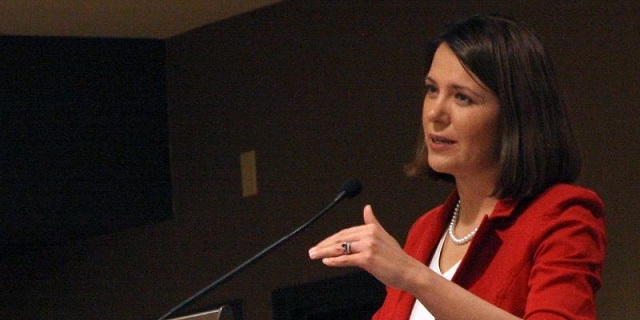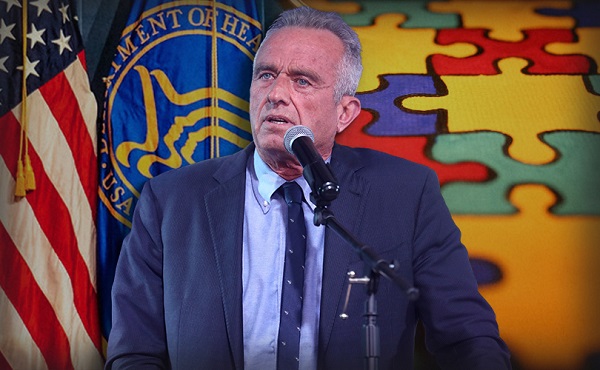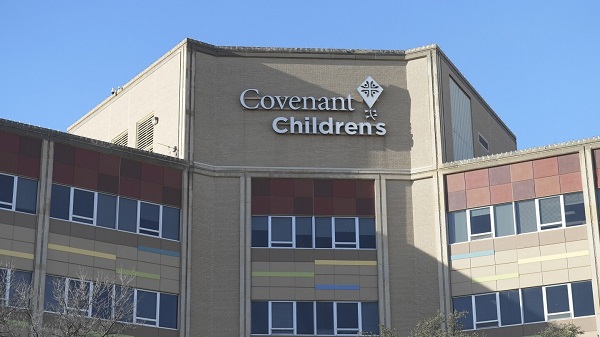Alberta
Alberta government must further restrain spending to stabilize provincial finances

From the Fraser Institute
By Tegan Hill
This year, program spending will reach a projected $14,334 per Albertan, which is $1,603 more per person (inflation-adjusted) than the Smith government originally planned to spend this year as outlined in the 2022 mid-year budget update.
Despite recording a $4.3 billion surplus last year, Premier Danielle Smith remains committed to a new approach to Alberta finances that relies less heavily on resource revenue, which includes restraining spending levels below the rate of inflation and population growth. That’s a big step forward, but is it enough to stabilize Alberta’s boom and bust rollercoaster?
First, some background.
After nearly a decade and a half of routine budget deficits, Alberta swung to a budget surplus when resource revenue (which includes includes oil and gas royalties) skyrocketed from $3.1 billion in 2020/21 to $16.2 billion in 2021/22. In 2022/23, the government enjoyed the highest level of resource revenue on record and relatively high levels have continued in recent years. Correspondingly, Alberta’s surpluses have continued.
Alberta governments have a habit of increasing spending during times of high resource revenue, such as the province is currently experiencing, to levels that are unsustainable without incurring deficits when resource revenue inevitably declines. That’s why the Smith government’s commitment to spending restraint is an important one.
Unfortunately, however, due to the Smith government’s spending increases in previous years, this restraint won’t go as far in stabilizing provincial finances. Moreover, there are a number of limitations and exceptions to these new spending rules that may impede their effectiveness.
Consider that this year, program spending will reach a projected $14,334 per Albertan, which is $1,603 more per person (inflation-adjusted) than the Smith government originally planned to spend this year as outlined in the 2022 mid-year budget update.

As shown above, program spending (inflation-adjusted) will reach a projected $14,041 per person in 2025/26 and a projected $13,750 per person in 2026/27, which is equivalent to per-person increases of $1,571 and $1,538, respectively, compared to the original plan in 2022.
So while per-person (inflation-adjusted) spending is set to decline, which aligns with the Smith government’s commitment, this restraint is starting from a higher base level due to spending decisions thus far. That means more work needs to be done to rein in spending.
Indeed, for perspective, if the Smith government had simply stuck to its original plan, spending would be closely aligned with stable, more predictable sources of revenue. And ultimately, that’s the way to avoid deficits.
There’s also several limitations and exceptions for the government’s new spending rule. For example, the spending limit applies only to “operating expense,” which does not include longer-term spending, disaster and emergency assistance, spending related to dedicated revenue, or contingencies. As a result of various limits and exceptions, total program spending growth in 2023/24 exceeds inflation and population growth by 1.8 percentage points. Put simply, these limitations and exceptions add to the risk of budget deficits.
Sustainable finances have been impeded by increases in per person spending since 2022. So while the Smith government deserves credit for its commitment to restrain spending moving forward, Alberta’s fiscal challenges aren’t over.
Author:
Alberta
Made in Alberta! Province makes it easier to support local products with Buy Local program

Show your Alberta side. Buy Local. |
When the going gets tough, Albertans stick together. That’s why Alberta’s government is launching a new campaign to benefit hard-working Albertans.
Global uncertainty is threatening the livelihoods of hard-working Alberta farmers, ranchers, processors and their families. The ‘Buy Local’ campaign, recently launched by Alberta’s government, encourages consumers to eat, drink and buy local to show our unified support for the province’s agriculture and food industry.
The government’s ‘Buy Local’ campaign encourages consumers to buy products from Alberta’s hard-working farmers, ranchers and food processors that produce safe, nutritious food for Albertans, Canadians and the world.
“It’s time to let these hard-working Albertans know we have their back. Now, more than ever, we need to shop local and buy made-in-Alberta products. The next time you are grocery shopping or go out for dinner or a drink with your friends or family, support local to demonstrate your Alberta pride. We are pleased tariffs don’t impact the ag industry right now and will keep advocating for our ag industry.”
Alberta’s government supports consumer choice. We are providing tools to help folks easily identify Alberta- and Canadian-made foods and products. Choosing local products keeps Albertans’ hard-earned dollars in our province. Whether it is farm-fresh vegetables, potatoes, honey, craft beer, frozen food or our world-renowned beef, Alberta has an abundance of fresh foods produced right on our doorstep.
Quick facts
- This summer, Albertans can support local at more than 150 farmers’ markets across the province and meet the folks who make, bake and grow our food.
- In March 2023, the Alberta government launched the ‘Made in Alberta’ voluntary food and beverage labelling program to support local agriculture and food sectors.
- Through direct connections with processors, the program has created the momentum to continue expanding consumer awareness about the ‘Made in Alberta’ label to help shoppers quickly identify foods and beverages produced in our province.
- Made in Alberta product catalogue website
Related information
Alberta
Province to expand services provided by Alberta Sheriffs: New policing option for municipalities

Expanding municipal police service options |
Proposed amendments would help ensure Alberta’s evolving public safety needs are met while also giving municipalities more options for local policing.
As first announced with the introduction of the Public Safety Statutes Amendment Act, 2024, Alberta’s government is considering creating a new independent agency police service to assume the police-like duties currently performed by Alberta Sheriffs. If passed, Bill 49 would lay additional groundwork for the new police service.
Proposed amendments to the Police Act recognize the unique challenges faced by different communities and seek to empower local governments to adopt strategies that effectively respond to their specific safety concerns, enhancing overall public safety across the province.
If passed, Bill 49 would specify that the new agency would be a Crown corporation with an independent board of directors to oversee its day-to-day operations. The new agency would be operationally independent from the government, consistent with all police services in Alberta. Unlike the Alberta Sheriffs, officers in the new police service would be directly employed by the police service rather than by the government.
“With this bill, we are taking the necessary steps to address the unique public safety concerns in communities across Alberta. As we work towards creating an independent agency police service, we are providing an essential component of Alberta’s police framework for years to come. Our aim is for the new agency is to ensure that Albertans are safe in their communities and receive the best possible service when they need it most.”
Additional amendments would allow municipalities to select the new agency as their local police service once it becomes fully operational and the necessary standards, capacity and frameworks are in place. Alberta’s government is committed to ensuring the new agency works collaboratively with all police services to meet the province’s evolving public safety needs and improve law enforcement response times, particularly in rural communities. While the RCMP would remain the official provincial police service, municipalities would have a new option for their local policing needs.
Once established, the agency would strengthen Alberta’s existing policing model and complement the province’s current police services, which include the RCMP, Indigenous police services and municipal police. It would help fill gaps and ensure law enforcement resources are deployed efficiently across the province.
Related information
-

 2025 Federal Election1 day ago
2025 Federal Election1 day agoRCMP Whistleblowers Accuse Members of Mark Carney’s Inner Circle of Security Breaches and Surveillance
-

 Autism2 days ago
Autism2 days agoAutism Rates Reach Unprecedented Highs: 1 in 12 Boys at Age 4 in California, 1 in 31 Nationally
-

 Health2 days ago
Health2 days agoTrump admin directs NIH to study ‘regret and detransition’ after chemical, surgical gender transitioning
-

 Also Interesting1 day ago
Also Interesting1 day agoBetFury Review: Is It the Best Crypto Casino?
-

 Autism1 day ago
Autism1 day agoRFK Jr. Exposes a Chilling New Autism Reality
-

 2025 Federal Election1 day ago
2025 Federal Election1 day agoBureau Exclusive: Chinese Election Interference Network Tied to Senate Breach Investigation
-

 COVID-191 day ago
COVID-191 day agoCanadian student denied religious exemption for COVID jab takes tech school to court
-

 International1 day ago
International1 day agoUK Supreme Court rules ‘woman’ means biological female





